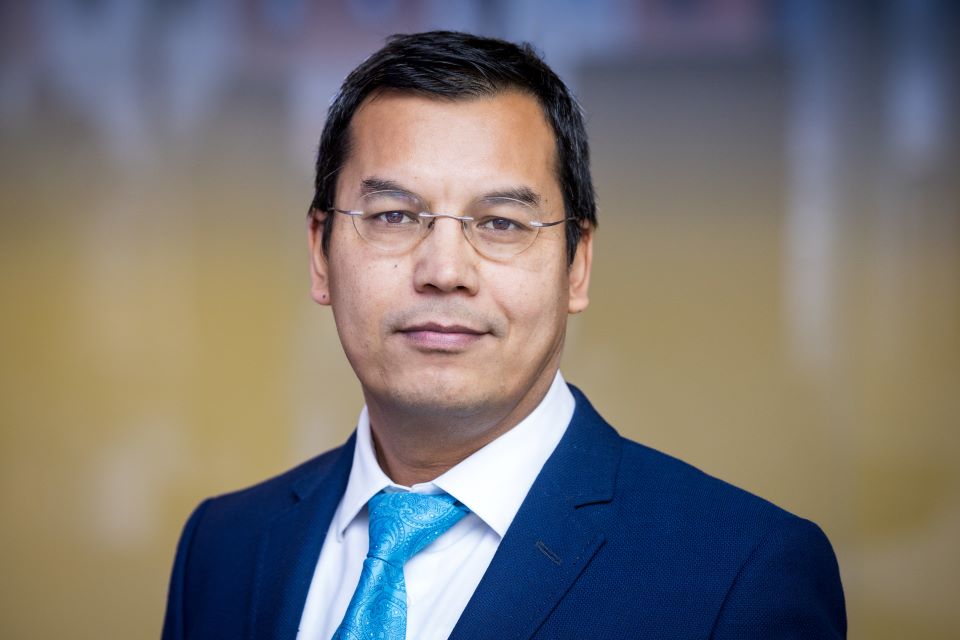TGI Director Demonstrates Power of Collaborative Science to Shape National Policy and Funding on Global Positioning
Maggie Rotermund
Senior Media Relations Specialist
maggie.rotermund@slu.edu
314-977-8018
Reserved for members of the media.
ST. LOUIS – A resolution crafted by Vasit Sagan, Ph.D., acting director of the (TGI) and associate professor in the Department of Earth and Atmospheric Sciences at Saint Ö±˛Ą×ÔÎżĘÓƵ University, has spurred action by a federal agency to make millions of dollars in new investments in the science behind the nation’s coordinate positioning system.
The resolution stems from the work of the U.S. Geospatial Excellence and Innovation Subcommittee of the National Geospatial Advisory Committee, chaired by Sagan, which includes industry and government experts. The committee provides advice and recommendations on national geospatial policy and management issues, the development of the National Spatial Data Infrastructure (NSDI) and the implementation of the Geospatial Data Act of 2018.
The National Oceanic and Atmospheric Administration (NOAA) recently released a notice of funding opportunity for a Geospatial Modeling Grant awarding as much as $10,000,000 to modernize and improve the National Spatial Reference System (NSRS) and advance the science of geodesy in the United States.
NOAA’s funding notice came just 11 weeks after the adoption of a (NGAC) that called for government action to “address the challenges and opportunities for augmenting geodesy capabilities in support of the National Spatial Reference System,” and “augment budgets to sponsor academic training and research work in geodesy and allied geospatial fields.”
The committee promotes geospatial data sharing across government, private and non-profit sectors and the academic community.
“The National Oceanic and Atmospheric Administration should be commended for taking swift and meaningful action to boost the science behind our nation’s vital geospatial systems. My colleagues and I on the National Geospatial Advisory Committee urged our partners in government to act expediently and they wasted little time in taking bold steps,” said Sagan, who drafted NGAC’s resolution as chair of its subcommittee on U.S. Geospatial Excellence and Innovation. “This prompt response to a pressing issue is a reminder of the powerful impact of bringing geospatial scientists together in collaboration.”
Sagan was appointed to the National Geospatial Advisory Committee in 2020.
According to NOAA, NSRS “defines latitude, longitude, height, gravity, and shoreline information, which supports a wide range of important activities, including mapping, charting, navigation, transportation, infrastructure, flood risk determination, national security, and scientific and environmental observations.” Systems like NSRS are put at risk by what some scientists have referred to as the nation’s “geodesy crisis.”
A co-authored by 15 noted geodetic scientists explained the crisis, writing,
“The U.S. is on the verge of being permanently eclipsed in geodesy and in the downstream geospatial technologies. This threatens our national security and poses major risks to an economy that is strongly tied to the geospatial revolution, on Earth and, eventually, in space.”
In addition to convening with scientists to weigh in on important matters of federal geospatial policy, Sagan has worked with colleagues across the eight institutions that comprise the Taylor Geospatial Institute to drive hands-on solutions to the geodetic talent gap.
The TGI consortium includes Saint Ö±˛Ą×ÔÎżĘÓƵ University, the Donald Danforth Plant Science Center, Harris-Stowe State University, University of Illinois Urbana-Champaign, Missouri University of Science & Technology, University of Missouri-Columbia, University of Missouri-St. Ö±˛Ą×ÔÎżĘÓƵ, and Washington University in St. Ö±˛Ą×ÔÎżĘÓƵ. Collectively, these institutions encompass more than 5,000 faculty and 100,000 students.
TGI’s mission is to advance geospatial science through multi-institutional, interdisciplinary collaborations to create innovative, real-world solutions to grand societal challenges. It supports a collaborative research and training environment and while shaping the future of geospatial science in the U.S.
Earlier this year, the State of Missouri awarded Saint Ö±˛Ą×ÔÎżĘÓƵ University $1 million to launch the TGI Academy, which will create micro-credentials in geodesy and related disciplines to bring newly skilled scientists into the field.
“We know the nations whose people master geospatial science and technology in fields like geodesy and position, navigation, and timing over the next ten years are the ones who will write the history of the rest of the century,” said Sagan. “At Taylor Geospatial Institute, we are focused on working with partners across government, industry and academia to ensure the U.S. competes and wins on geospatial science.”
